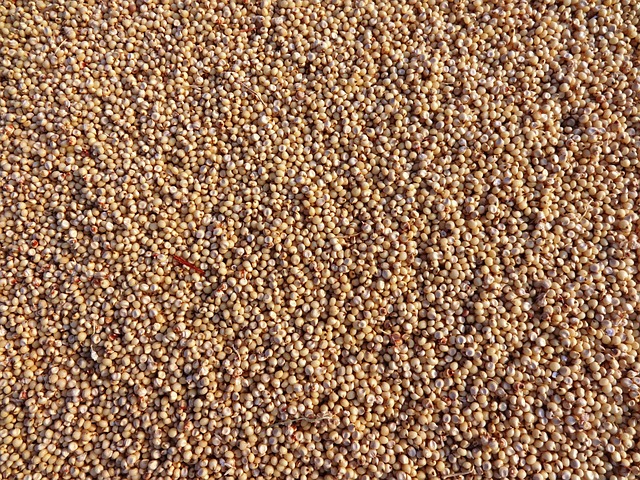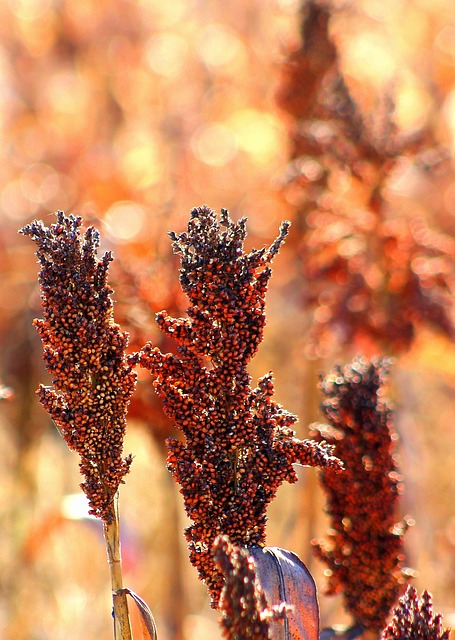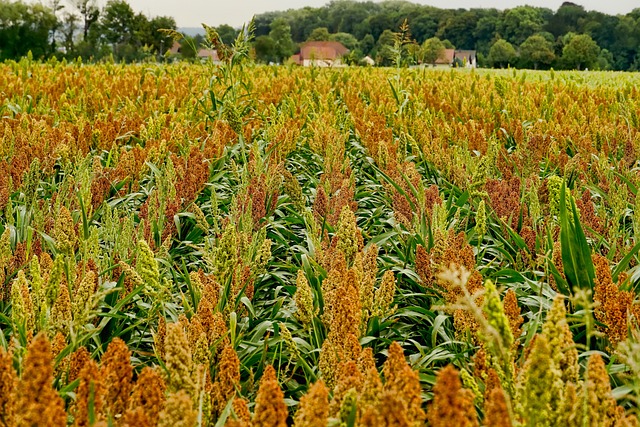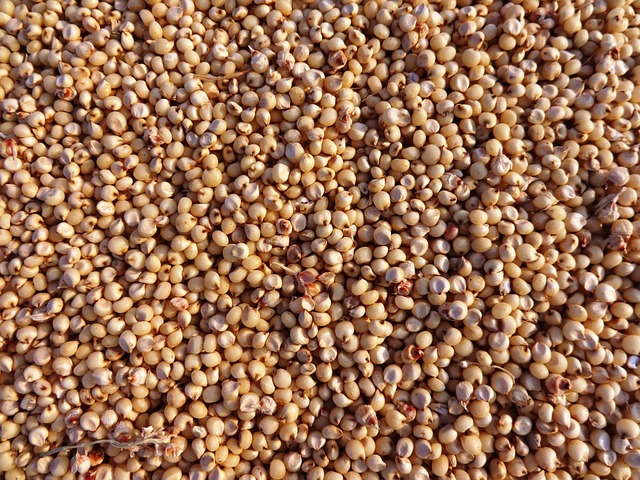In a world where innovation and sustainability go hand in hand, it is time to turn our attention towards the humble yet extraordinary sorghum seed. As global challenges, such as climate change and food security, loom over our future, agriculture finds itself at the forefront of the battle. Amidst this landscape of uncertainty, the sorghum seed market emerges as a beacon of hope, offering immense potential for both farmers and consumers alike. Join us on a captivating journey as we delve into the flourishing world of sorghum seeds, exploring their mysterious roots, bountiful benefits, and the transformative opportunities they hold for a brighter and more resilient future.
1. The Rising Popularity of Sorghum Seeds: Unveiling the Factors Behind the Flourishing Market
The popularity of sorghum seeds has been steadily increasing in recent years, with the market experiencing a flourishing growth that shows no signs of slowing down. Numerous factors contribute to this trend, and it is important to understand the key drivers behind this surge in demand.
One of the primary factors influencing the rising popularity of sorghum seeds is their remarkable nutritional value. These tiny grains pack a powerful punch, offering a range of health benefits. Sorghum seeds are gluten-free and rich in fiber, making them an excellent choice for individuals with dietary restrictions or those seeking a healthier lifestyle. Additionally, sorghum seeds are a great source of important vitamins and minerals, including iron, magnesium, and phosphorus. Their diverse nutrient profile has led to increased interest from health-conscious consumers looking to incorporate nutrient-dense foods into their diets.
- Sorghum seeds are versatile and adaptable, making them suitable for various culinary applications.
- They are known for their drought-tolerance, making them an ideal choice for regions with limited water resources.
- These grains can be cultivated in both tropical and temperate climates, expanding their market reach.
- As a far less resource-intensive crop compared to wheat or rice, sorghum seeds are gaining attention as a sustainable and eco-friendly choice for farmers.
In conclusion, the flourishing market for sorghum seeds can be attributed to a variety of factors. Their impressive nutritional value, versatility, adaptability to different climates, and sustainable farming practices have all contributed to the increasing demand for sorghum seeds. As consumers become more health-conscious and environmentally aware, it is no surprise that sorghum seeds have emerged as a popular choice in the agricultural market.

2. Understanding the Benefits of Sorghum Seeds: A closer look at the Nutritional Value and Diverse Applications
Sorghum seeds are an incredibly versatile food source that offer a wide range of nutritional benefits. Packed with essential vitamins and minerals, sorghum seeds are a powerhouse of goodness. They are particularly rich in iron, magnesium, and zinc, which are vital for maintaining a healthy immune system and supporting cognitive function.
- Iron: Playing a critical role in carrying oxygen throughout the body, iron is essential for energy production. Incorporating sorghum seeds into your diet can help prevent iron deficiency anemia and boost overall vitality.
- Magnesium: Known for its muscle-relaxing properties, magnesium is crucial for maintaining healthy bones and a strong cardiovascular system. Regular consumption of sorghum seeds can contribute to reduced risk of heart disease and support proper muscle function.
- Zinc: This trace mineral is fundamental for numerous enzymatic reactions in the body. By incorporating sorghum seeds into your meals, you can enhance your immune system, promote wound healing, and maintain healthy skin.
In addition to its nutritional value, the applications of sorghum seeds are impressively diverse. This grain can be ground into a flour to make gluten-free baked goods, or it can be cooked whole and used as a substitute for rice or couscous. It is also used to make delicious porridges, snacks, and even beverages.
- Baking: Sorghum flour is an excellent alternative for individuals with gluten sensitivities or celiac disease. Its mild flavor and fine texture make it a perfect addition to bread, muffins, and various other baked goods.
- Cooking: Cooked sorghum seeds can be used as a versatile ingredient in a variety of savory dishes. Whether it’s pilafs, salads, or stir-fries, sorghum seeds add a wholesome and nutty twist to your meals.
- Porridge and Snacks: Sorghum can be transformed into hearty porridge by simmering it with milk or water. Additionally, the seeds can be popped like popcorn, creating a crunchy snack that is rich in fiber and nutrients.
- Beverage: Sorghum can also be used to brew unique and refreshing beverages. From sorghum beer to healthy smoothies, the possibilities to explore with sorghum seeds are endless.
The nutritional value and various applications of sorghum seeds make them a valuable addition to any diet. Whether you are looking to boost your immune system, experiment with gluten-free recipes, or simply diversify your meal options, sorghum seeds are a natural and versatile choice.

3. Navigating the Global Sorghum Seed Market: Key Regions, Trends, and Growth Opportunities
When it comes to the global sorghum seed market, understanding the key regions, trends, and growth opportunities is crucial for navigating this ever-evolving industry. Here, we delve into the fascinating world of sorghum seed and highlight some of the most important aspects to consider.
- Key Regions: Exploring different regions provides valuable insights into production, consumption, and market potential. From the vast sorghum fields of the United States and Brazil to the emerging markets in Africa and Asia, each region offers unique opportunities and challenges.
- Trends: Keeping an eye on trends is essential to stay ahead in this competitive market. Whether it’s the increasing demand for drought-resistant varieties, the rise of organic and sustainable farming practices, or the adoption of advanced technologies for enhanced crop yields, staying informed will help businesses adapt and thrive.
- Growth Opportunities: The global sorghum seed market is brimming with potential for those who are willing to seize the opportunities. From expanding into untapped markets to developing innovative seed traits that cater to specific consumer preferences, recognizing and capitalizing on growth opportunities is crucial for long-term success.
By understanding the key regions, staying updated on the latest trends, and actively identifying growth opportunities, businesses can navigate the complex global sorghum seed market with confidence, driving growth and ensuring success in this thriving industry.

4. Cultivating Success: Best Practices and Recommendations for Sorghum Seed Farmers and Agribusinesses
When it comes to cultivating success in sorghum seed farming and agribusiness, implementing best practices and following recommendations is crucial. Here are some key strategies and tips that can help sorghum seed farmers and agribusinesses thrive:
Diversify your sorghum seed varieties: To maximize your success, it’s important to offer a wide range of sorghum seed varieties to cater to different customer preferences and market demands. By diversifying your offerings, you can capture a larger market share and increase profitability.
Invest in research and development: Staying up-to-date with the latest advancements in sorghum seed breeding and genetic improvement is essential. Collaborate with research institutions, agronomists, and agricultural experts to invest in innovative technologies and techniques that can enhance seed quality, disease resistance, and overall yield. This will not only give you a competitive edge in the market but also contribute to the long-term success of your sorghum seed farming.
Ensure strong seed quality control measures:
- Regularly test your seeds for purity, germination rate, and vigour to guarantee high-quality products.
- Implement stringent quality control protocols throughout the seed production process, from planting to packaging.
- Adhere to industry standards and certifications to build trust among customers and agribusiness partners.
Establish strong relationships in the industry:
- Collaborate with other sorghum seed farmers and agribusinesses to share knowledge, resources, and market insights.
- Attend industry conferences, tradeshows, and seminars to network and stay updated on the latest trends and developments.
- Engage in partnerships with seed distributors, manufacturers, and retailers to expand your reach and distribution channels.
By embracing these best practices and recommendations, sorghum seed farmers and agribusinesses can cultivate a solid foundation for long-term success and growth in the industry.
In Summary
As we bring this exploration of the flourishing sorghum seed market to a close, we can’t help but feel a sense of awe for the potential that lies within these humble seeds. From their ancient origins to their modern-day significance, sorghum seeds have captivated the hearts and minds of farmers, researchers, and consumers alike.
Throughout history, sorghum has proven its resilience, adapting to diverse climates and cultivating cultural bonds as it traveled across continents. Today, in the midst of shifting agricultural practices and increasing demand for sustainable food options, sorghum has emerged as a champion crop.
Digging deeper into the realm of sorghum seeds, we unearthed a nexus of innovation and sustainability. Pioneers and scientists are ardently collaborating to unlock the full potential of these unassuming seeds, exploring their untapped nutritional benefits and harnessing their ability to thrive in arid regions. From biofuel production to gluten-free flour alternatives, sorghum seeds are pushing boundaries and redefining the possibilities within the agricultural industry.
The flourishing sorghum seed market is a testament to the unwavering spirit of those who sow its seeds. Farmers, armed with knowledge and guided by ancestral wisdom, are reinvigorating their fields with this hardy grain, planting the seeds of progress and prosperity.
But let us not forget the crucial role that consumers play in this narrative. As we embrace sustainable and nutritious food choices, sorghum seeds offer an opportunity to forge a more sustainable future. Integrating this versatile grain into our diets not only nourishes our bodies but also supports the preservation of biodiversity and empowers local farming communities.
As we bid farewell to this exploration of the sorghum seed market, we find ourselves inspired by the passion and dedication that surrounds these seeds. From the ancient civilizations that first cultivated them to the forward-thinking innovators of today, sorghum seeds have long been sowing the promise of a better tomorrow.
So, let us all sow the seeds of sorghum – and in doing so, may we cultivate a world that is rooted in sustainability, nurtured by innovation, and enriched by the bounty of nature’s gifts.
